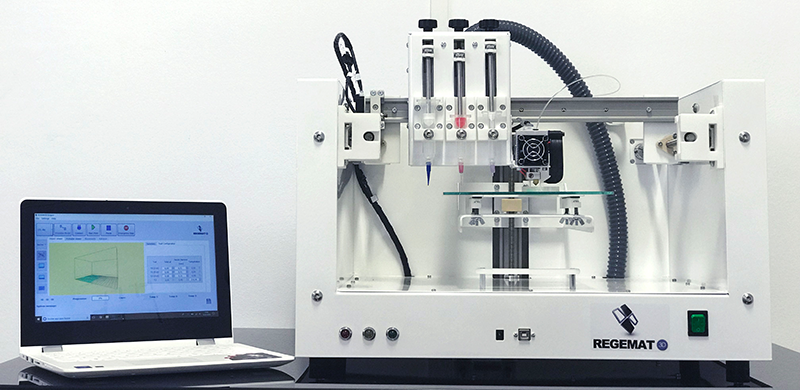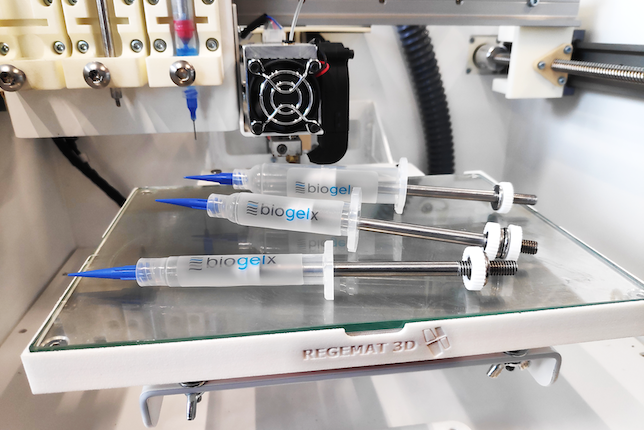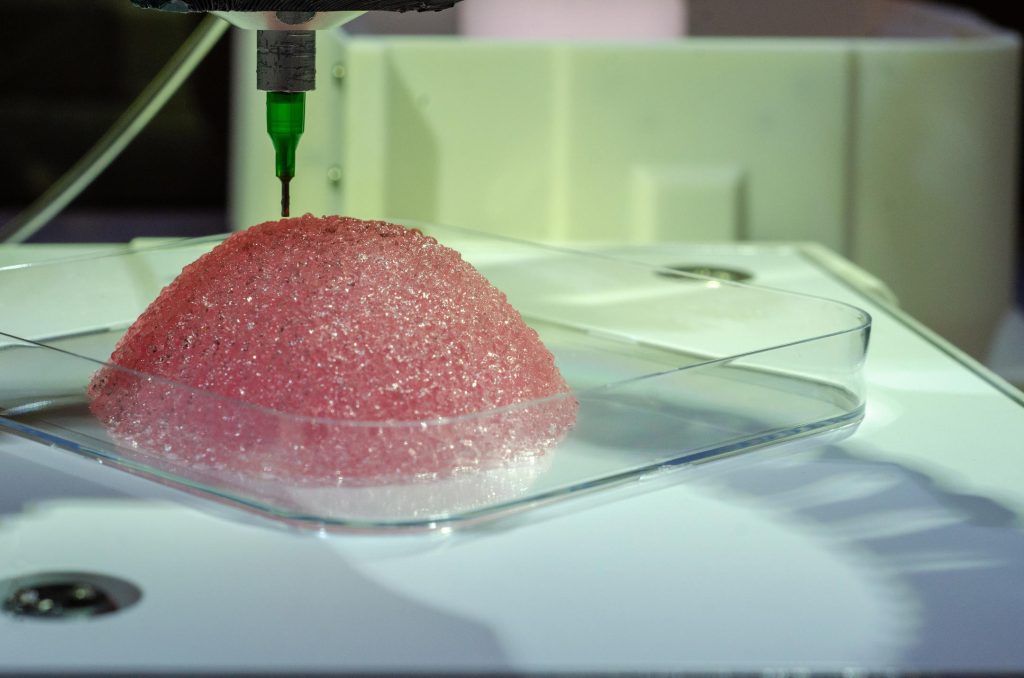Spanish 3D bioprinting specialist Regemat 3D has raised more than €500,000 in equity crowdfunding.
Announced late last year, the funding round has seen Regemat 3D gain the backing of over 500 investors, for its plans to ramp up the marketing and development of its proprietary 3D bioprinting technology. With further R&D, the firm believes its portfolio could enable the creation of personalized, functional tissues, capable of treating patients, curing diseases and ultimately improving people’s quality of life.

Configurable tissue 3D bioprinting
Established in 2015, Regemat 3D has spent the last seven years or so seeking to advance the development of its modular 3D bioprinting platforms. Configurable for use with Fused Filament Fabrication (FFF), Injection Pore Filling (IPF) and Injection Volumen Filling (IVF) printheads, the systems enable users to combine the different techniques and materials needed to meet specific lab R&D applications.
At present, the firm’s portfolio includes software, a bioreactor, materials and accessories, as well as its flagship BIO V1 and REG4LIFE 3D bioprinters. While the former allows for a wide range of movements in the X, Y and Z, providing it with the precision to place cells on varying surface types, the latter facilitates independent Z axis movement, enabling the use of two syringes on multi-well plates.
According to Regemat 3D, the machines are designed to meet disease modeling, drug testing and organ-on-a-chip applications, and over the years, they’ve gradually been adopted by scientists in these areas. At the University of Seville, for instance, doctoral researcher Vicente Linares, has previously deployed the BIO V1 system to 3D bioprint custom pharmaceutical dosage forms.
However, in order to address the most demanding 3D bioprinting use cases, and enable the creation of tissues that advance regenerative medicine, Regemat 3D has also recognized the need for collaboration. In the past, this has seen the company establish a partnership with Biogelx, through which the pair developed a new 3D skin model in 2019, in addition to seeking out funding to further its own R&D.

Regemat 3D’s crowdfunding drive
As part of its recent efforts to secure backing for the development of its portfolio, Regemat 3D set up a Crowdcube crowdfunding page, complete with a breakdown of its latest bioprinting breakthroughs. On the site, the firm boasts of having “sold 3D bioprinters to more than a hundred research institutions,” which are now capable of producing everything from cartilage to muscle tissue and spinal cords.
Regemat 3D’s page also cites reports dating back to 2019 that say the 3D bioprinting market will be worth $1.6 billion by 2024, while revealing that its compound annual growth rate grew by 36% from 2016-2021, suggesting to potential investors that it’s well-positioned to earn a share of what is becoming an increasingly lucrative industry.
Having now wrapped up its equity crowdfunding round, it appears that the company’s overtures have worked, as it generated €515,572, slightly more than its initial €500,000 target. Leveraging the capital raised via the initiative, which saw Regemat 3D part with 2.78% of its equity at a share price of €16.95, it plans to expand its sales and marketing teams while continuing to invest in product R&D.
The successful crowdfunding round represents the company’s second in two years, after it raised €472,901 in 2020, an investment which helped finance the launch of its REG4LIFE system. Although a number of industry news outlets have reported that these fundraising campaigns are set to be followed by an Initial Public Offering (IPO), Regemat 3D has yet to confirm publicly whether such a move is in its plans.

3D bioprinting’s growing appeal
While 3D bioprinting generally remains at an early stage of development, its potential as a means of rapidly creating patient-specific tissue therapeutics, continues to attract the attention of investors. Earlier this year, Lyon-based start-up Healshape managed to raise $6.8 million towards its development of custom 3D bioprinted breast implants.
This closely followed Inventia Life Science’s $25 million funding round. Closed late last year, the investment is set to see the company ramp up the roll-out of its RASTRUM 3D bioprinter, particularly in the US, where it believes the system could address a biomedical R&D and drug discovery market worth over $40 billion.
Elsewhere, in the mainstream 3D printing sector, stalwarts like 3D Systems are also starting to step up their efforts to gain a greater share of the bioprinting market. To help advance its Print to Perfusion program, the firm bought Volumetric Biotechnologies late last year, in a deal that could be worth up to $400 million.
To stay up to date with the latest 3D printing news, don’t forget to subscribe to the 3D Printing Industry newsletter or follow us on Twitter or liking our page on Facebook.
For a deeper dive into additive manufacturing, you can now subscribe to our Youtube channel, featuring discussion, debriefs, and shots of 3D printing in-action.
Are you looking for a job in the additive manufacturing industry? Visit 3D Printing Jobs for a selection of roles in the industry.
Featured image shows a set of Biogelx-INKs on a Regemat 3D bioprinting system. Photo via Biogelx.



